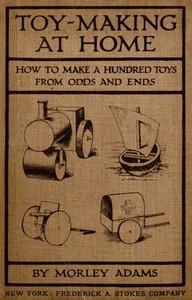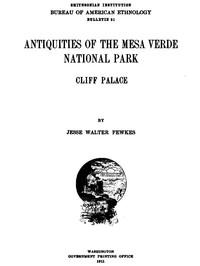|
|
Read this ebook for free! No credit card needed, absolutely nothing to pay.Words: 6295 in 3 pages
This is an ebook sharing website. You can read the uploaded ebooks for free here. No credit cards needed, nothing to pay. If you want to own a digital copy of the ebook, or want to read offline with your favorite ebook-reader, then you can choose to buy and download the ebook.

: Toy-Making at Home: How to Make a Hundred Toys from Odds and Ends by Adams Morley - Toys@FreeBooksWed 07 Jun, 2023 canisters can be used, or, if something is required giving a more definite impression of solidity, two flat boot-polish tins can be substituted. Another piece of knitting needle passes through the centre of these, and through holes in the sides of the cab, and so acts as axle. This is kept in place by means of dabs of sealing wax. For the stack you can use a long thin cotton reel, or, better still, you can fix on another small tin by the method shown in Fig. 81. The turning of the front wheel can be regulated by means of two strings passing from the two right-angle strips through a hole into the cab. If you can fix the strings to a piece of wood as shown in Fig. 82, you will be able to steer properly. A hole in the bottom of the cab, and a piece of wood stretched tightly across the top, should enable you to set up the steering apparatus. For the hull, a piece of 5/8 in. or 3/4 in. board, about 18 in. long will do. This can be cut to the boat shape by means of a pocket knife or a spokeshave, and finished off with glass-paper. It should be sharp-pointed at the bows, about 3 in. to 4 in. at the centre, tapering down to a width of 2 in. at the stern. In the centre of the hull nail a block of wood, and to it glue two funnels . For these, the odd lengths cut off from bamboo curtain poles will do admirably; or, if these be not obtainable, a couple of incandescent-mantle cases will suffice. The adjustment of the motive power is the difficult task. First, you will need to purchase a couple of yards of suitable elastic: this is sold at most large toy shops, and costs usually a penny a yard. To fix this into place beneath the hull you will need to construct two metal supports. If you can get an old tin box made from metal sufficiently stout, that will do; if not, then you had better buy a piece of sheet brass, No. 20 gauge: 6 in. by 4 in. will be ample. Draw out these supports as shown in Figs. 84 and 85, and bend them into shape as in Figs. 86 and 87--one for the bow and one for the stern. Screw on the bow one about 1-1/2 in. or 2 in. from the point, and the stern one in the middle of the end. Now into the bow support fix a loop of stout wire to hold the rubber strands, making it sufficiently large to rest against the sides and so prevent turning. At the stern support adjust the propeller bearings. On the care with which these are adjusted depends largely the success of the model. Take a piece of wire and bend it as in Fig. 88, introducing a hard smooth glass bead. This "bead" runs more freely against the metal, and so facilitates the working. Now stretch the elastic between the two loops, arranging it so that there are six or eight strands. To work the model, turn the propeller round and round till the strands of elastic are very tightly twisted, place on the surface of the water, and then release the propeller. Fig. 83 shows the completed model. All boys love a toy that "goes"; and so a short account showing how to make The whole motive power is supplied by one or two candle ends, and a bent piece of strong metal tubing. This last can scarcely be called either "odds" or "ends"; and you will probably have to purchase it at a shop selling model-engine fittings, but a few pence will cover the cost. You must get an eight-inch piece of solid drawn copper or brass tubing, with an inside diameter of 1/8 in. The next operation is the most difficult: it is bending the tube to the shape shown in Fig. 89. This must be done very gently, otherwise you will crack or dent it. The loop shown should have a diameter of about 5/8 to 3/4 of an inch. All that you need do now is place the candles under the loop of the tube and heat it. The heat from the candles makes the air in the tube very hot. This hot air is expelled from one arm of the tube; and a current of water rushes up one arm of the tube and down the other with considerable force. It is this current that causes the boat to move. If you look at Fig. 91 you will get a good idea of the construction of this model, and realise how simple it really is. The boiler is provided by a medium-sized flat oblong tin, with the lid soldered down so that it is steam tight. For the purpose of putting water into the boiler when necessary, a hole is bored in the lid, and a cork fitted tightly. In one end of the boiler, and towards the top, you must make a pin hole. When the water boils well, the steam is expelled through this tiny hole with considerable force; and to this is due the motion of the craft. Free books android app tbrJar TBR JAR Read Free books online gutenberg More posts by @FreeBooks
: Antiquities of the Mesa Verde National Park: Cliff Palace by Fewkes Jesse Walter - Mesa Verde National Park (Colo.); Colorado Antiquities@FreeBooksWed 07 Jun, 2023
|
Terms of Use Stock Market News! © gutenberg.org.in2025 All Rights reserved.






